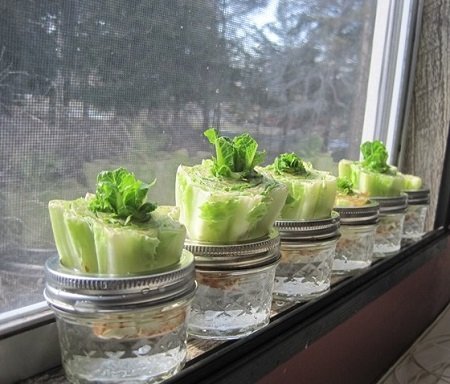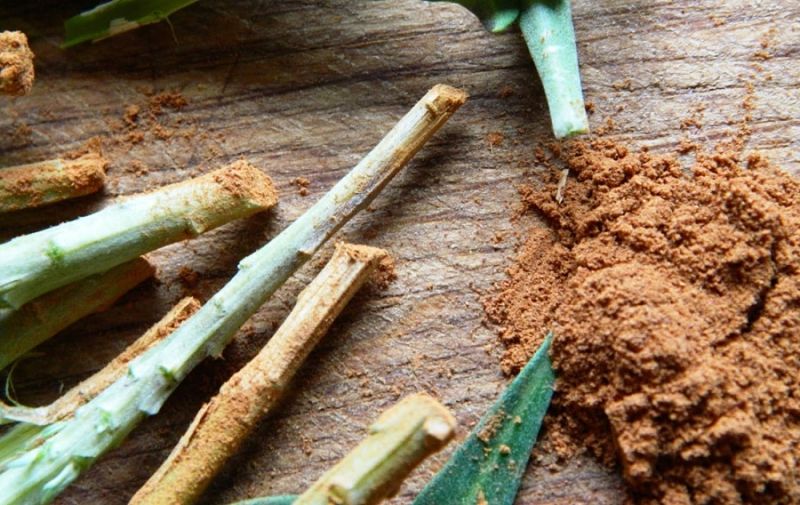Learn about the vegetables that you can grow again and how is the process of growing them. Most are quick and easy to grow, without the need to use many materials, just water and a space for them to re-generate roots.

Many everyday plants and vegetables can be re-grown indeterminately. In homes and under very little laborious care, you can generate again the growth of many very healthy vegetables for our body and in this way even generate a source of consumption free of contaminants.
Some foods are really easy to grow back at home from leftovers, and some can even be grown on your kitchen counter.
Vegetables you can grow again
The following is a list of vegetables that you can grow again, as a guide, then we invite you to search our blog for the details of how to grow each of them.
1. Garlic
When the garlic begins to germinate, the little green shoots are very bitter to cook. But instead of throwing out the sprouted cloves, you can put them in a glass with a little water and grow sprouted with the garlic sprouts. The sprouts have a much milder flavor than garlic cloves and are great in salads, pasta, and as a garnish.
2. Carrot leaves
The edges of carrots that we normally cut and throw away can grow leaves if you put them in a container with a little water. Put the container next to a well-lit window and you will have carrot sprouts to use as a garnish or in a salad.
3. Basil
Put some ten-centimeter stems in a glass of water and put them in a place with direct light. When the roots are about an inch long, you can plant them in pots to grow a whole basil plant.
4. Cambray onions
In as little as five days, you can regrow a whole chambray onion. Leave an inch of onion attached to the roots and place them in a small glass with a little water. In a few days, you will have Cambray onions.
10. Pope
Potatoes take up a lot of space in the garden and are somewhat difficult to harvest in the traditional way. You can save space by harvesting your potatoes in a box of tomatoes. Potatoes can be grown in these boxes as they can grow straight up. It is important that you continue to cover the plant as it grows so that more potatoes will be produced. At the end of the potato growing season, it is as simple to harvest as removing the box and removing the soil and straw with your hands.
6. Onions
Plant the discarded onion root in a pot or directly in the soil outside to regrow it. You can harvest it early and have fresh green onions or wait until the bulb is fully developed.
7. Ginger
Like onions, ginger can be planted in the ground to grow back, but the process takes a bit longer. It may take a few months for it to germinate, and you should be able to harvest a fully grown bulb in 8 to 10 months.
8. Mushrooms
Plant the mushroom logs in soil with some compost or used coffee beans and keep them in a humid environment, preferably where it will be cold at night. It can be difficult to grow them since in a few days the stems will begin to germinate or the heads will rot.
9. Coriander
Like basil, coriander can grow roots if the stems are placed in a glass of water. Once the roots are long enough, just plant them in a pot. In a couple of weeks, the sprouts will start and in a couple of months you will have a whole plant.
10. Romaine lettuce
If you have the stem of a romaine head that is still intact, put the stem in a deep plate with about 1 ½ centimeters of water and place it next to a window. You will start to see new leaves in a couple of weeks, and they will be fully grown in three to four weeks.
11. Pineapple
Pineapples do not set the seed, but grow from shoots or suckers that develop from the base of the plant. They can also spread from the tuft of leaves at the top of the fruit. A pineapple plant takes a maximum of 4 years to produce flowers and fruits. Adult plants have sharp spines on the edges of their leaves and can be up to 4 feet (1.21 m) tall and 3 feet (0.91 m) wide.








